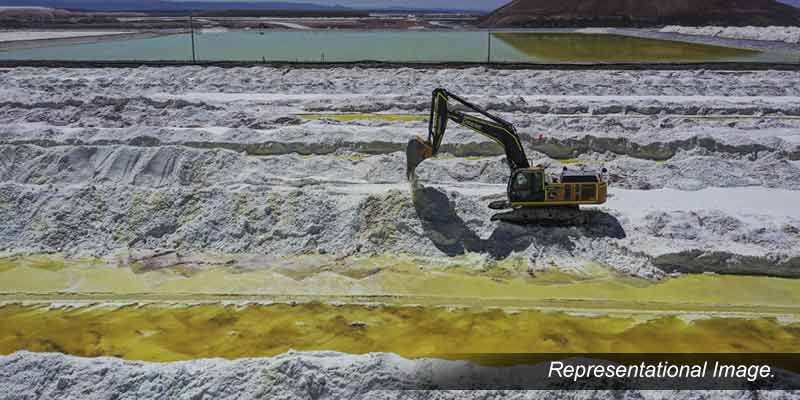- India
- Feb 20
- Sreesha V.M
India, Argentina ink MoU for exploration of lithium, other critical minerals
• India and Argentina signed an agreement for deeper collaboration in exploration and resource development of critical minerals, particularly lithium.
• A Memorandum of Understanding (MoU) was signed between Mineral Exploration and Consultancy Limited (MECL), a PSU under the Ministry of Mines, and the Provincial Government of Catamarca, Argentina, which will pave the way for deeper collaboration in exploration and resource development of critical minerals.
• Both sides discussed expanding cooperation in the mining sector, particularly in lithium exploration and investment opportunities.
• Argentina, known for its vast lithium reserves, is a crucial partner for India in securing essential minerals required for electric vehicle batteries and renewable energy storage.
• Argentina is part of the ‘lithium triangle’ along with Chile and Bolivia with more than half of the world’s total lithium resources and having the distinction of having second largest lithium resources, third largest lithium reserves and fourth largest production in the world.
• The discussions covered ongoing lithium exploration efforts by Khanij Bidesh India Ltd (KABIL) & Greenko in Catamarca and the possibilities of increasing participation of Indian companies in mining projects of Argentina.
What is the purpose of KABIL?
• Khanij Bidesh India Ltd (KABIL), a joint venture company between National Aluminium Company Limited (NALCO), Hindustan Copper Limited (HCL) and Mineral Exploration Corporation Limited (MECL), was formed in 2019.
• The mandate of this company is to identify, acquire, develop, process and make commercial use of strategic minerals in overseas locations for supply in India.
• The main objective is to ensure mineral security of the country through supply side assurance of these minerals.
• KABIL is focusing on identifying and sourcing battery minerals like lithium and cobalt.
Lithium is called “white gold”
• Often called “white gold”, lithium is a critical mineral, with particular importance for electric vehicles (EVs) and energy storage, and global demand is expected to grow more than 40 times by 2040.
• Lithium is a soft, silvery-white metal that can be found in many places throughout the world, typically in mineral compounds in hard rock, sediments, and certain water sources.
• It is the single most important critical mineral for the energy transition.
• Lithium has a range of uses in both chemical and technical applications. Lithium in various forms, such as lithium carbonate, lithium hydroxide and lithium chloride, is used in lubricant greases, pharmaceuticals, catalysts, air treatment and, particularly, in batteries.
• Being the lightest known metal, lithium is also used in alloys to increase strength-to-weight ratios, taking advantage of lithium’s tensile strength and lightweight (low-density) characteristics. Aluminium-lithium alloys, for example, are used in the aerospace and motorsport industries.
• It occurs naturally and abundantly in the Earth and is generally found in three sources — pegmatites or hard rock, sedimentary deposits often referred to as clay, and waters with high concentrations of dissolved salts referred to as brines.
• Salar brines are close to the surface, in contrast, geothermal brines are high-temperature, high-pressure formations deep underground.
• Lithium-ion (Li-ion) batteries have applications in energy storage system - from hearing aid to container sized batteries to power a cluster of villages, electric vehicles, portable electronic sector, grid storage, telecom and telecommunication towers, medical devices, household and office power backup (UPS), powering robots in the processing industry.
• Lithium-ion batteries can power any electrical application without the need of physical wires.
(The author is a trainer for Civil Services aspirants.)


